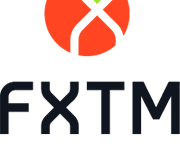-
Best Forex Brokers
Our top-rated Forex brokers
-
Brokers for Beginners
Start trading here
-
Islamic Account Brokers
Best accounts for Muslim traders
-
Forex Demo Accounts
Learn to trade with no risk
-
No-deposit Bonuses
Live trading with no deposit
-
KES Trading Accounts
Save on conversion fees
-
ECN Brokers
Trade with Direct Market Access
-
Lowest Spread Brokers
Raw spreads & low commissions
-
Market Maker Brokers
Fixed spreads & instant execution
-
MetaTrader 4 Brokers
The top MT4 brokers in Kenya
-
MetaTrader 5 Brokers
The top MT5 brokers in Kenya
-
TradingView Brokers
The top TradingView brokers
-
cTrader Brokers
The top cTrader brokers in Kenya
-
All Trading Platforms
Find a platform that works for you
-
Copytrading Brokers
Copy professional traders
-
Forex Trading Apps
Trade on the go from your phone
Data showed that inflation in the eurozone fell far more than expected in November, down to 2.4% from 2.9% in October and much lower than the expected readout of 2.7%.

Simultaneously, data from Germany and Italy showed a small uptick in unemployment rates, further raising concerns over a wider EU slowdown.
The market reaction was immediate, with the EUR/USD plummeting from 1.09800 to 1.09100. Market analysts also moved forward their expected date for when the European Central Bank (ECB) will start cutting rates, to as early as next April.

The economic data seemed to run counter to recent statements from ECB President Christine Lagarde, who had warned on Monday that it was “not the time to start declaring victory” and that “headline inflation may rise again slightly in the coming months”.
But with US inflation also falling – though exactly as forecast – and intense pressure on the Federal Reserve to start cutting rates as early as possible next year, the outlook for the EUR/USD is hard to predict.
Markets have currently priced in a cut to US interest rates in March 2024, and this week members of the Fed’s FOMC have spoken openly about inflationary pressures receding and the need to bring borrowing costs down to support the economy.
In a further twist, the OECD´s latest economic outlook, published on Wednesday, 29 November, predicted that the ECB will not start cutting rates until 2025 and that markets were wrong to expect a cut before then.
So, in the whirlwind of data, forecasts, and statements, where to now for the EUR/USD?
In the short term, the EUR will remain under pressure, especially after its bull run since the beginning of October. With monetary policy support for either currency now unlikely, traders will be closely studying policymaker statements and wider economic data. As long as data shows continued economic weakness in the EU, and the US economy in rude health, the USD should retain the upper hand.
Of course, as has been the case all year, any unexpected upturn in inflation on either side of the Atlantic would radically alter the equation.
In the medium term and into the new year, things look more complex. On balance, with the Federal Reserve under more political pressure than the ECB to start cutting rates, I expect the USD to lose some of its lustre.
This will be doubly true if the OECD is right, and the ECB favours retaining the status quo until 2025 – a highly unlikely scenario. In that case, the potential downside for the USD is huge.
































